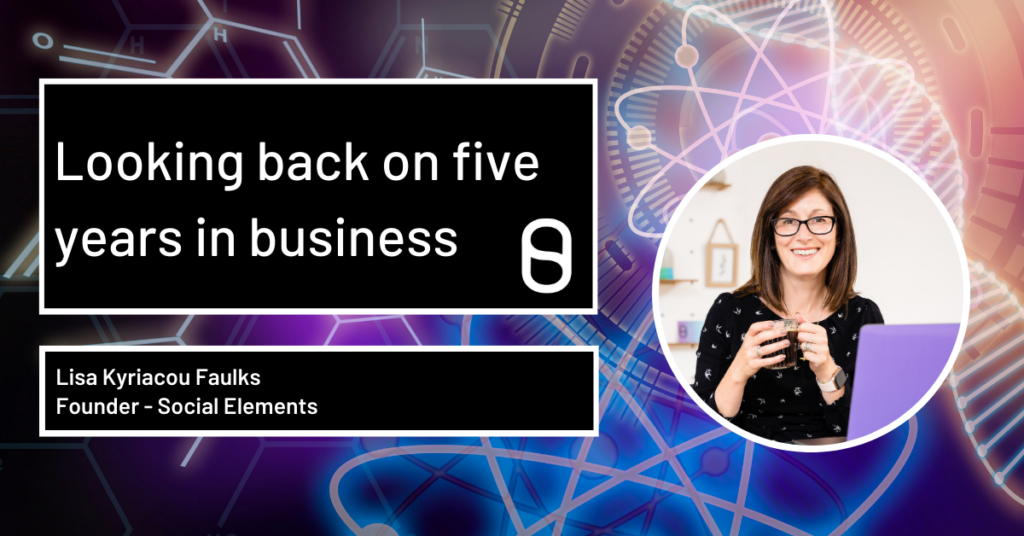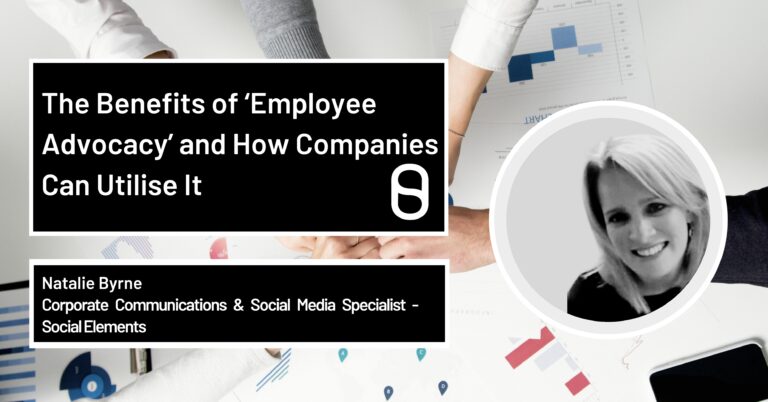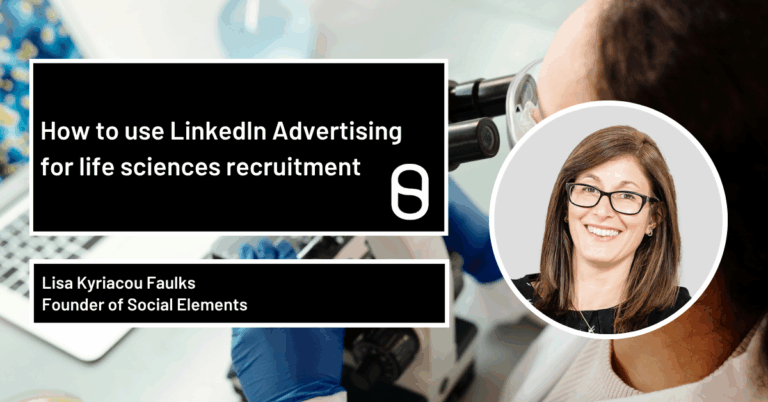Looking back on five years in business
This month, Social Elements is celebrating its fifth birthday. So much has changed in the social media world and the life sciences sector since 2017. But Social Elements has also changed as a business.
In this blog, I’ll be reflecting on these first five years and looking at how social media marketing for life sciences businesses has evolved in that time.
Back in 2017, Donald Trump was the US President, the pandemic was still two years away and TikTok was only just launching globally.
At that time, there was a lot more scepticism about whether social media marketing was right for the life sciences sector. Did it really have a role to play in helping brands raise their profile? Or could it cause more reputational harm than good for ‘serious’ B2B businesses?
Even firms that had a social media marketing presence often delegated this activity to a junior member of staff or added it to a rapidly growing list of responsibilities for an already overstretched marketing manager.
Changing perceptions in the life sciences industry
But perceptions have changed in recent years as social media has started to play an increasingly central role in our work and personal lives. Many start-up businesses have come to realise that having a strong digital presence adds credibility to a brand, helping to attract the attention of future investors.
The pandemic has also played a role in persuading life sciences companies to embrace, or at least adopt, social media. Patients are consuming information in different ways now – who would have thought that virtual consultations would become commonplace? We’ve also seen the rapid rise of med-tech and patient apps that allow people to manage their health better. So, the life sciences sector is changing and businesses have realised that their digital marketing needs to keep pace with these changes.

Tighter industry regulation for marketers
For life sciences businesses, social media marketing presents some very specific challenges given the strict regulations in the pharmaceutical sector.
In September 2022, new guidance on the use of social media in the pharmaceutical industry was published by the IFPMA (International Federation of Pharmaceutical Manufacturers and Associations) and EFPIA (European Federation of Pharmaceutical Industries and Associations).
This guidance includes recommendations on how companies can assess risk and the appropriateness of digital activities. It covers employees’ use of social media, working with influencers and best practice for other digital channels. This guidance is a must-read for anyone working in the industry. It complements the existing ABPI Code of Practice – which governs the promotion of medicines in the UK.
At Social Elements, we recommend that our clients have a social media marketing policy and ensure that any team members who get involved in social media complete relevant training. We can provide bespoke social media training – either for beginners or at a more advanced level.

The rapid rise of short-form video
It’s not just industry regulation that has changed. Social media marketing has also been transformed in the past five years. Back in 2017, companies frequently posted text-based messages with few images and virtually no videos.
All that has changed with the rise of short-form video and TikTok. To keep their audiences engaged, businesses now need to employ a whole variety of tactics on social media – including videos, live sessions, polls and newsletters. Engaging with your audience is also crucial on platforms like Twitter. It’s not enough simply to post and ghost!
So, where does TikTok fit into the mix? Many of us have seen videos of dancing doctors on TikTok and there is still scepticism about whether this is the right platform for businesses in the life sciences sector. I predict that LinkedIn will continue to be the go-to platform for many companies – particularly now that some businesses are switching from Twitter following Elon Musk’s take-over.
On LinkedIn, employee advocacy will play an increasing role. Employees have social networks that are 10 times larger than company networks, according to LinkedIn. So, businesses can reach a much wider audience when employees share valuable content with their networks.
Employee advocacy can help with brand awareness, leads and sales. But it is also vital for employee empowerment, engagement and recruitment. Companies with a successful employee advocacy programme are 58% more likely to attract and 20% more likely to retain top talent – read more in this article.
We’ve also seen huge changes in paid advertising on social media. When I first set up Social Elements, LinkedIn advertising was still in its infancy – with very little targeting or strategic focus. Now, paid ads offer a laser-focused way to reach your audience on LinkedIn using a range of strategic objectives and professional targeting capabilities.
We manage LinkedIn paid advertising for several clients and we also provide training on this too. Our clients have been very pleased with the results that we’ve achieved using LinkedIn ads – please read about our work with Amalgam, as an example.

Branching out
Social media marketing has come a long way in the past five years. But Social Elements has also come a long way in that time. Back in 2017, I was working on my own in the business and focusing mainly on day-to-day platform management for my first few clients.
Today, Social Elements offers a much wider range of services – including training, audits, paid advertising, day-to-day platform management, and strategy work. We now have a virtual team of 11 associates based in the UK, Ireland and North America.
The team offers a wealth of skills in design, copywriting, PR, content marketing and social media marketing for clients. Being able to call on such a broad range of skills means that we can select exactly the right person for the job but we can also put together a multi-skilled team to deliver large omnichannel marketing campaigns. I feel very fortunate to work with such a talented group of marketers.

Looking ahead
So, what changes are on the horizon?
In the life sciences industry, we’re likely to see the increasing digitalisation of healthcare, with more sophisticated tools to assess, diagnose and treat patients. Artificial intelligence (AI), virtual reality (VR) and augmented reality (AR) are expected to play into these developments. This article provides an interesting read on life sciences trends for 2023.
It’s predicted that digital technologies will also help to reduce the impact of healthcare, particularly clinical trials, on climate change over the coming years – and this is another area to watch.
Businesses will need the right social media marketing strategies to respond to these challenges.
Closer to home, there’s lots on the horizon for Social Elements. In 2023, we’re planning to expand our team of freelancers and recruit an additional member of staff to help meet growing demand from clients.
We’re also planning to develop our training offering further. We’ve recently designed and delivered bespoke social media training for a communications consultancy in London. In the new year, we’ll be looking to offer more training to small and medium-sized businesses in the life sciences sector.
We’ll be updating the training section of our website with all the details over the coming weeks. So, keep an eye out for more information and please do get in touch if you’d like to find out more about what we can offer.



